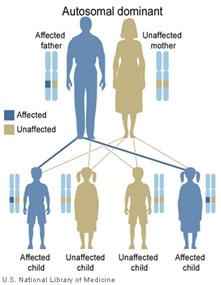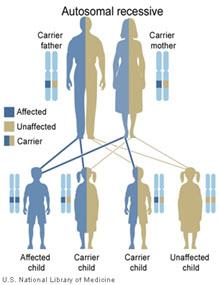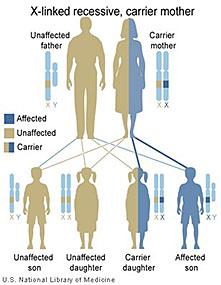
Genetics primer: All the cells in the body contain instructions on how to do their job. These instructions are packaged into chromosomes, each of which contains many genes, which are made up of DNA. Errors, or mutations, in certain genes can cause PIDDs.
PIDDs are caused by genetic abnormalities that prevent the body from developing normal immune responses.
All of the body’s cells contain instructions on how to do their jobs. These instructions are packaged into 23 pairs of chromosomes—22 pairs of numbered chromosomes, called autosomes, and one pair of sex chromosomes (XX for females and XY for males). One chromosome in each pair is inherited from the person’s mother and the other from the father. Each chromosome contains many genes, which are made up of DNA, the carrier of genetic information. Errors, or mutations, in genes can cause diseases such as PIDDs.
Genetic mutations sometimes appear randomly. For example, de novo, or “new,” mutations occur as a result of a mutation in the egg or sperm of one of the parents or in the fertilized egg itself. In these cases, the affected person does not have a family history of disease.
Most often, genetic mutations run in families. Several types of inherited mutations can cause PIDDs.
Autosomal Dominant

In this example, a parent with an autosomal dominant disorder has two affected children and two unaffected children
To develop an autosomal dominant disease, a person needs an abnormal gene from only one parent, even if the matching gene from the other parent is normal. A parent with an autosomal dominant disease has a 50 percent chance of having a child with the condition. The chance of one child inheriting the mutation is independent of whether his or her siblings have the mutation. In other words, if the first two children in a family have the mutation, the third child still has a 50 percent chance of inheriting it.
In the example, a man with an autosomal dominant disorder has two affected children and two unaffected children.
Autosomal Recessive

Illustration demonstrating how genes are passed down from parents to children. In this example, two unaffected parents each carry one copy of a gene mutation for an autosomal recessive disorder. They have one affected child and three unaffected children, two of which carry one copy of the gene mutation.
Two copies of an abnormal gene—one from each parent—must be present for an autosomal recessive disease to develop. Typically, both parents of an affected child carry one abnormal gene and are unaffected by the disease because the normal gene on the other chromosome continues to function. In this case, each child has a 25 percent, or one in four, chance of being affected by the disease. Each child also has a 50 percent chance of inheriting one copy of the mutated gene. People who inherit one abnormal gene copy will not develop the disease, but they can pass the mutation on to their children.
In the example, two unaffected parents each carry one copy of a gene mutation for an autosomal recessive disorder. They have one affected child and three unaffected children, two of which carry one copy of the gene mutation.
X-Linked Recessive

In the example, an unaffected woman carries one copy of a gene mutation for an X-linked recessive disorder. She has an affected son, an unaffected daughter who carries one copy of the mutation, and two unaffected children who do not have the mutation.
X-linked recessive diseases are caused by genes located on the X chromosome. Males have only one copy of X-linked genes because they have one X chromosome. If a son inherits a disease-causing mutation in a gene located on the X chromosome, he will develop the disease.
Females usually do not develop X-linked recessive diseases because they have two X chromosomes and would need to inherit two abnormal copies of the gene—one from each parent—to be affected by the disease. Even if a daughter carries the mutated gene on one X chromosome, the normal gene on the other X chromosome continues to function and she remains unaffected by the disease. Females who inherit one abnormal gene copy can pass the mutated gene on to their children.
In the example, an unaffected woman carries one copy of a gene mutation for an X-linked recessive disorder. She has an affected son, an unaffected daughter who carries one copy of the mutation, and two unaffected children who do not have the mutation.


